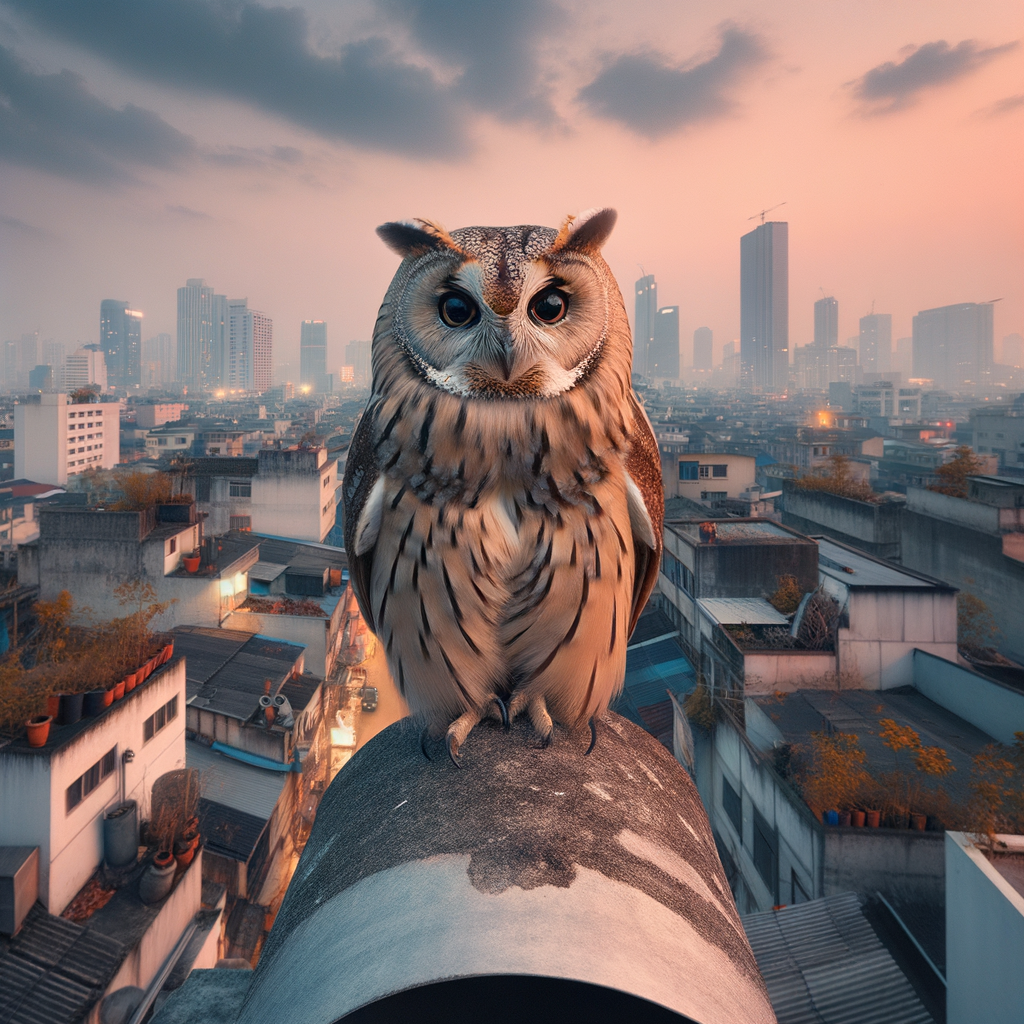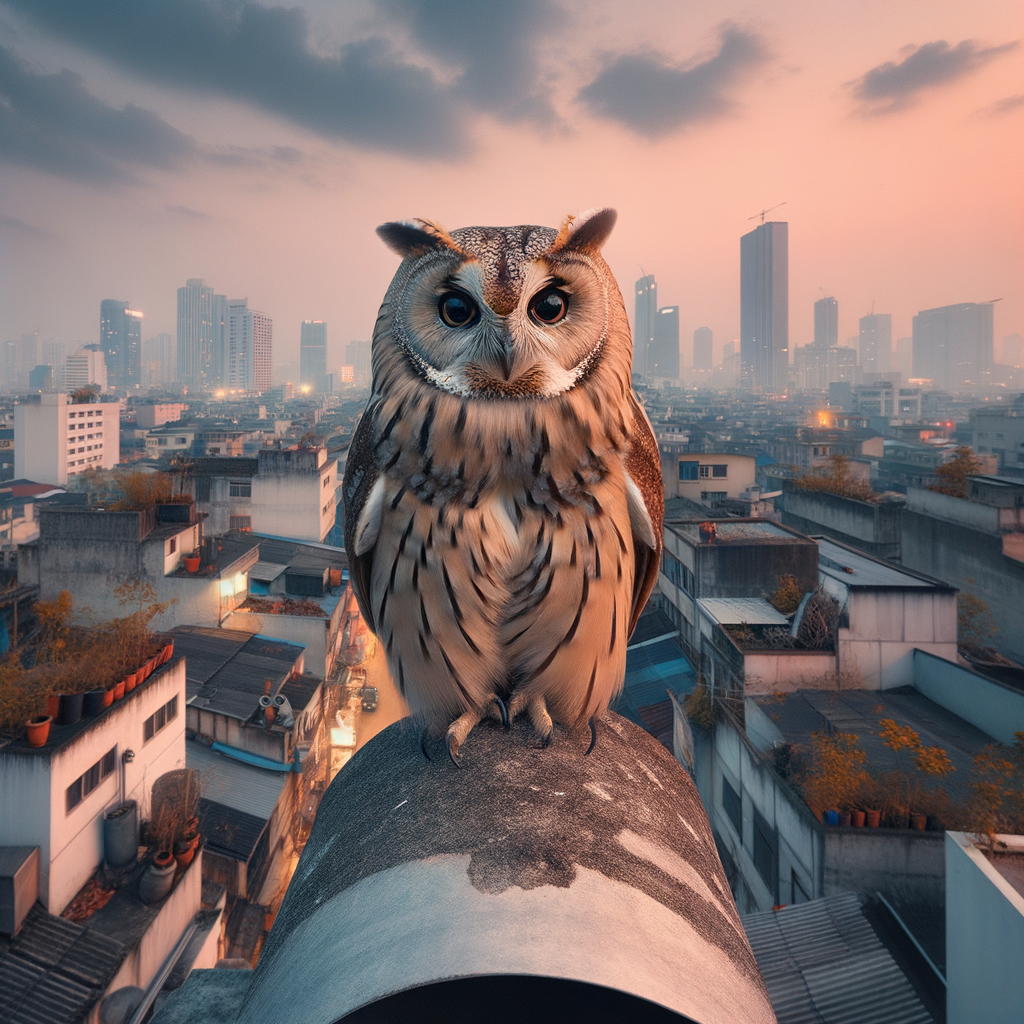
Introduction to Urban Owls
- Overview of owls in urban ecosystems: Owls are fascinating birds that have adapted to living in cities. These nocturnal creatures can be found in parks, gardens, and even on buildings. They play a crucial role in controlling the population of small animals like rodents.
- Importance of understanding urban owl feeding habits: Knowing what urban owls eat helps us understand their role in the ecosystem. It also helps in conservation efforts. By studying their diet, we can ensure these majestic birds continue to thrive in our cities.
Urban Owl Diet: An Overview
- General diet of city-dwelling owls: They primarily feed on small mammals like mice and rats. These rodents are abundant in cities due to human waste and food scraps. Owls also eat birds, insects, and occasionally, reptiles. Their diet is diverse, allowing them to thrive in various urban settings.
- Factors influencing urban owl prey choices: The availability of prey is a major factor. In cities, the abundance of rodents and small birds makes them easy targets. Human activities, such as waste management and construction, also impact prey availability. Additionally, seasonal changes can influence prey choices, with owls adapting to what is most plentiful at different times of the year.
Common Food Sources for Urban Owls
- Rodents and Small Mammals: Urban owls often hunt for rodents like mice and rats. These small mammals are abundant in cities, making them a primary food source. Owls use their sharp talons and keen eyesight to catch these creatures, even in low light.
- Birds: Another common prey for urban owls. Pigeons, sparrows, and other small birds can be found in cities. Owls are skilled hunters and can catch birds in flight or while they are roosting.
- Insects: Like beetles, moths, and grasshoppers are also part of an urban owl’s diet. These insects are plentiful in city parks and gardens. Owls help control insect populations, making them beneficial for urban environments.
| Food Source | Examples | Hunting Method |
|---|---|---|
| Rodents and Small Mammals | Mice, Rats | Sharp Talons, Keen Eyesight |
| Birds | Pigeons, Sparrows | Flight Hunting, Roosting Capture |
| Insects | Beetles, Moths | Quick Strikes, Night Hunting |
Urban owls are adaptable hunters. They can find food in various places like parks, gardens, and even near buildings. This adaptability helps them survive and thrive in city environments.
Urban Owl Feeding Habits
-
How Urban Owls Hunt in City Environments
They use tall buildings and streetlights to spot their prey. These high places give them a good view of the ground below.
Owls in cities often hunt at night when it’s quiet. They look for small animals like mice and rats. Sometimes, they even catch insects. The bright lights in cities help them see better at night.
One interesting fact is that urban owls are not afraid of people. They hunt close to parks, gardens, and even near homes. This makes it easier for them to find food.
-
Adaptations for Hunting in Urban Areas
Their feathers are very soft, which makes their flight almost silent. This helps them sneak up on their prey without being heard.
Another adaptation is their sharp eyesight. Owls can see very well in low light. This is important because cities are often dark at night.
Urban owls also have strong talons. These claws help them catch and hold onto their prey. They can grab small animals quickly and carry them away.
Finally, urban owls are very smart. They learn quickly and can adapt to new environments. This helps them survive in busy city areas.
Case Study: Owl Hunting in Central Park
-
Overview of the study
This study was conducted to understand how owls hunt in Central Park, New York City. Researchers observed the owls over a period of six months. They recorded the owls’ hunting behaviors and the types of prey they caught.
-
Key findings on urban owl feeding habits
The study revealed several interesting facts about urban owls:
- Adaptability: Owls in Central Park have adapted to hunt in a busy urban environment. They use streetlights to spot prey.
- Diet: Their diet includes small mammals like mice and rats, as well as birds and insects.
- Hunting Times: Owls are most active during the early morning and late evening when the park is quieter.
Here is a table summarizing the key findings:
Aspect Details Adaptability Use of streetlights for hunting Diet Small mammals, birds, insects Hunting Times Early morning, late evening According to Wikipedia, Central Park is home to a variety of wildlife, making it an ideal location for such a study.
Impact of Urban Environment on Owl Diet
-
How City Landscapes Influence Urban Owl Nutrition
In the wild, owls hunt for small animals like mice and insects. But in cities, they have to adapt. Tall buildings and busy streets make it harder for owls to find their usual prey.
Urban areas have more pigeons, rats, and even garbage. Owls might eat these instead. This change in diet can affect their health. For example, eating rats that have eaten poison can make owls sick.
Studies show that urban owls often have different diets than their rural cousins. This is because cities offer different types of food. Owls in cities might eat more birds and fewer small mammals.
-
Effects of Human Activity on Owl Diet
Human activity also affects what owls eat. Construction, pollution, and noise can scare away the animals that owls usually hunt. This forces owls to look for other food sources.
People sometimes leave out food or garbage, which attracts animals like rats and pigeons. Owls might then hunt these animals. However, this can be risky. For example, rats might have eaten poison, which can harm the owls.
In some cities, people try to help owls by creating green spaces. These areas can attract small animals that owls like to eat. This helps to balance their diet and keeps them healthy.
| Factor | Impact on Owl Diet |
|---|---|
| City Landscapes | More pigeons and rats, fewer small mammals |
| Human Activity | Less natural prey, more garbage and poisoned animals |
Urban Wildlife Management and Owls
- Role of wildlife management in supporting urban owlsPlays a crucial role in helping urban owls thrive. Experts work to create safe habitats and ensure there are enough nesting sites. They also monitor owl populations to keep them healthy. For example, in some cities, wildlife managers install nesting boxes to provide safe places for owls to live.
- Strategies for maintaining diverse food sources for owls in citiesMaintaining a variety of food sources is essential for urban owls. Wildlife managers use several strategies to achieve this:
- Encouraging green spaces: Parks and gardens can attract small animals that owls eat.
- Reducing pesticide use: Fewer chemicals mean more insects and rodents for owls to hunt.
- Creating wildlife corridors: These are pathways that connect different green areas, making it easier for owls to find food.
By using these strategies, cities can help ensure that owls have plenty of food to eat.
Conclusion: The Resilience of Urban Owls
Urban owls are remarkable creatures. They have adapted to city life in fascinating ways. Let’s summarize their diet and feeding habits and discuss why studying and conserving them is important.
-
Summary of urban owl diet and feeding habits:
- Urban owls eat a variety of foods. They hunt small mammals, birds, and insects.
- They are opportunistic feeders. This means they eat what is available in their environment.
- Owls use their keen senses to find food. Their excellent vision and hearing help them hunt at night.
-
Importance of continued study and conservation efforts:
- Studying urban owls helps us understand how they adapt to city life.
- Conservation efforts are crucial. They ensure that owl populations remain healthy.
- Protecting owls also helps maintain the balance of urban ecosystems.
Urban owls show us how wildlife can thrive in cities. By learning more about them and protecting their habitats, we can ensure they continue to be a part of our urban landscapes.






